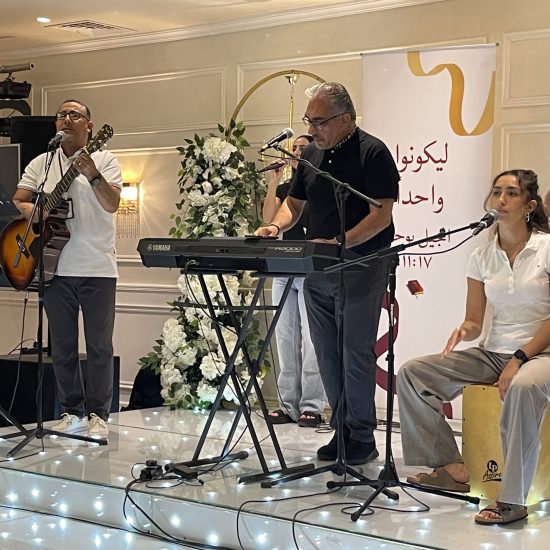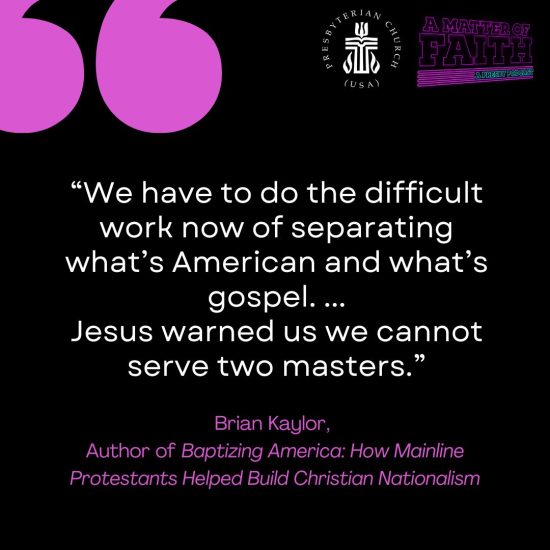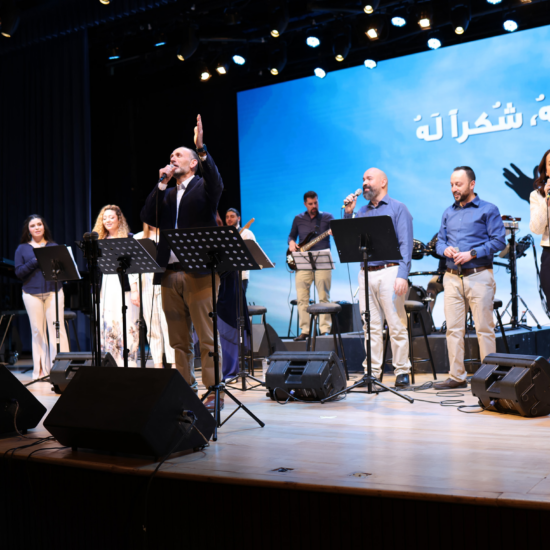Today the area of land that butts up to the east side of the Jordan River where first-century baptisms were recorded in Scripture is still known by the biblical name Bethany Beyond the Jordan.
Archeologists have made a strong case that John the Baptist conducted his ministry as the forerunner of Jesus from what today is a swatch of land in the Hashemite Kingdom of Jordan. It is also a site with strong ties to the Old Testament prophet Elijah.

Rustom Mkhjian, assistant director of the Baptism Site Commission at Bethany Beyond the Jordan, kneels near an inscription of an excavated church on the east side of the River Jordan where John the Baptist focused his ministry. (Bill Webb photo)
|
Bethany Beyond the Jordan is not the only biblical touchpoint in Jordan but certainly one of the most important to Christendom.
A wooden landing allows visitors to walk down to the edge of the Jordan River where researchers believe John called crowds to repent and where he baptized them. This area is where John baptized Jesus — one of the holiest of Christian sites.
Pilgrims can descend into the shallow Jordan River from either the Israel or Jordan side and be initially or symbolically baptized. The Jordan is narrow here with nary a ripple on the surface of the water until a person is immersed.
Structures on the Israeli side tend to be made of precisely cut stones like the Holy City of Jerusalem itself. But on the Jordan side, a growing number of archeological sites that have been — and continue to be — excavated are covered from the elements and the Middle Eastern sun by renewable, open-air wooden shelters. Souvenirs are in short supply on the Jordan side.
Early churches that were built here within the first three centuries after the death and resurrection of Christ help lend credence to the biblical significance of Bethany Beyond the Jordan. Excavation has uncovered baptismal pools built adjacent to the early churches excavated here.
Researchers say the trust third- and fourth-century Christians placed in the area as the location of John’s ministry is compelling evidence for that location. They say these early Christians were convinced this was the site of John’s baptisms and the place where John baptized Jesus. Continuing excavations of churches and baptismal pools reinforce that belief.
Rustom Mkhjian, assistant director of the Baptism Site Commission at Bethany, has given his life to discovering the secrets of this tract of shoreline, and his enthusiasm for years of discoveries has stoked his passion for his work. His eyes widen, his voice is enthusiastic and his gestures grand as he describes each finding.
He tells a group of Christian journalists that he hopes to be buried here when he dies, now that property on both sides of the baptismal areas have been rid of landmines that had long made excavation virtually impossible.
A renewal of interest in Bethany Beyond the Jordan has prompted churches of various backgrounds to be built in the immediate area in reverence of the site on Jordan’s east bank. In 2009, Baptists dedicated a Baptist Center that Baptists and others could use for baptisms of visiting pilgrims.
The offer of a designated plot for the center was made by King Abdullah II in 2007 during a visit by Baptist World Alliance President David Coffey of England.
Mt. Nebo and Moses
Pilgrims can reach the peak of Mt. Nebo today much easier than did Moses and the Hebrews as they looked over into the Promised Land in ancient times.
It is here that Moses was allowed to look across into the land flowing with milk and honey but not to enter himself. Mt. Nebo also is where Moses was believed to have been buried after his death, although no one knows exactly where his grave lies.
A church and exhibits of religious-themed mosaics share the pinnacle with historical markers noting the biblical significance of the site. Visitors can stand before a marker that literally points out directionally to cities and features in Israel to help them get a sense of what Moses witnessed as he looked across the Jordan River Valley. Today, on a clear day, visitors can see the West Bank city of Jericho, Jerusalem, Bethlehem, the Dead Sea and the Sea of Galilee.
Umm Qais (Gadara)
Umm Qais in the far north of Jordan is the biblical location of the country of the Gadarenes, where Jesus cast demons out of a man and into a herd of swine, which ran over the edge and down into the Sea of Galilee.
Today, archeologists are reconstructing Roman ruins, including ancient shops, an amphitheater and impressive columns on the high overlook from which visitors can see the Sea of Galilee, northern Israel, Syria, the Sea of Galilee and — on a clear day —Lebanon’s Mount Hermon.






